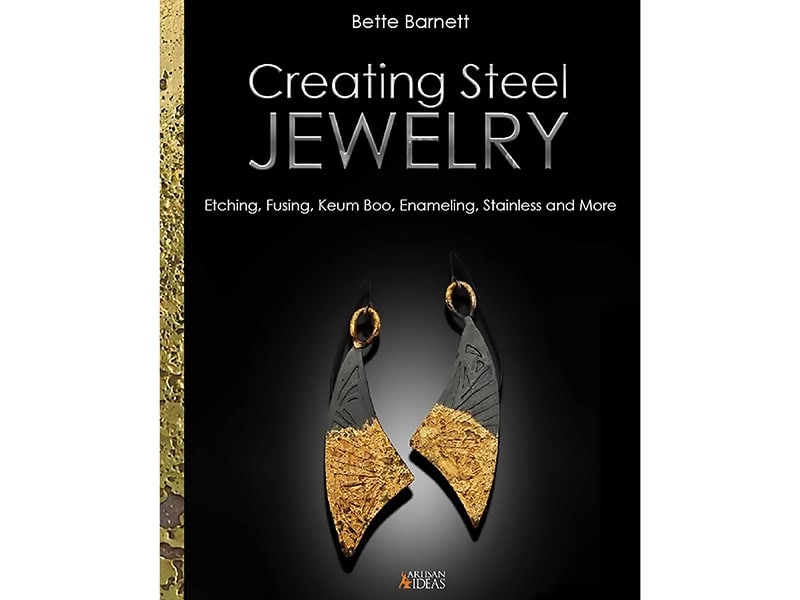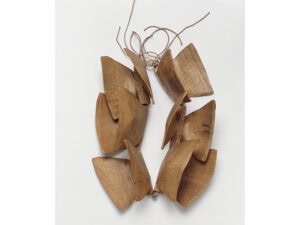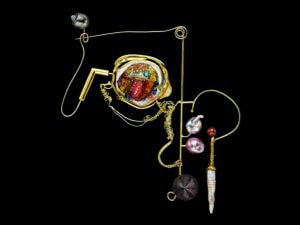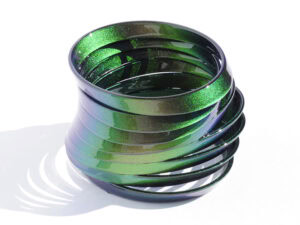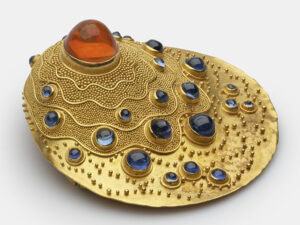Creating Steel Jewelry: Etching, Fusing, Keum Boo, Enameling, Stainless and More. Watchung, NJ: Artisan Ideas, 2024.
At a time where cookbooks double as memoirs and influencer memoirs are lifestyle sales pitches, it’s nice to review a book that is exactly what it is. Bette Barnett’s Creating Steel Jewelry is an informative textbook about working with (mostly) mild steel. It includes detailed steps and an abundance of illustrative and inspirational images. It’s designed to demystify steel as a material for jewelers and jewelry artists. Barnett encourages the reader to understand the unique challenges of working with steel. She guides them through many technical processes with patience and clarity.
Broken up into 10 practical chapters, with an eleventh final chapter showcasing finished jewelry made with steel, the book explains how to approach steel as a jewelry material, starting with Chapter 1. Basics of Steel. The table of contents includes the chapter headings as well as subcategories, which will make it helpful as a reference manual when a jeweler needs to find specific information. In addition, as you move through the book, the chapter title is included on every odd page, a small detail I appreciated.
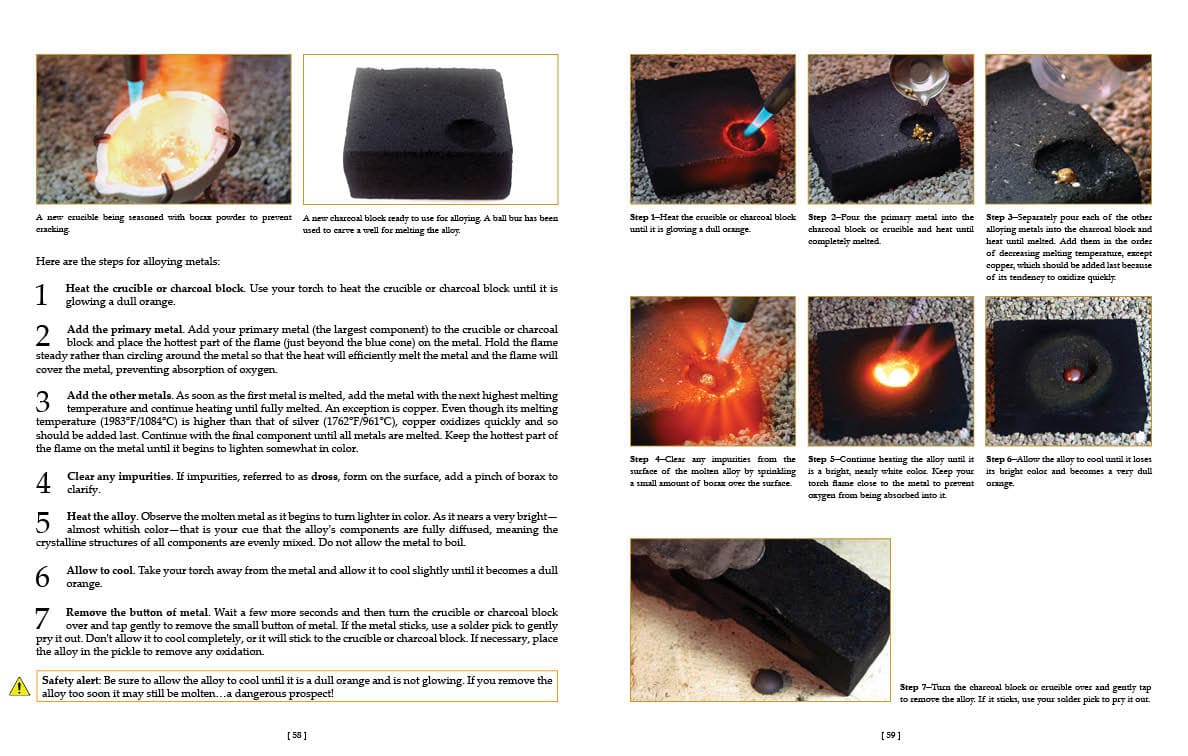
The layout is structured for real-world use with clear diagrams, sequential photography, and detailed instructions. In the process steps, large numbers in the left margin help the reader stay on task as they move from a hands-on attempt back to the book to check for the next step. The balance of visuals to text is spot-on, and the technical guidance is thorough while acknowledging multiple ways to get to the same results.
Safety alerts are scattered throughout the book, alerting readers when they might run into hazards when sourcing steel. These include, for example, plastic, ceramic, and galvanized coatings on repurposed steel, or protecting your eyes and lungs while welding. These warnings are lined in safety yellow with a yellow caution sign in the margin, which helps them jump out to the reader at a glance. I appreciated the proximity of these warnings to the step-by-step explanations, which makes them more likely to be applied by a person new to these procedures.
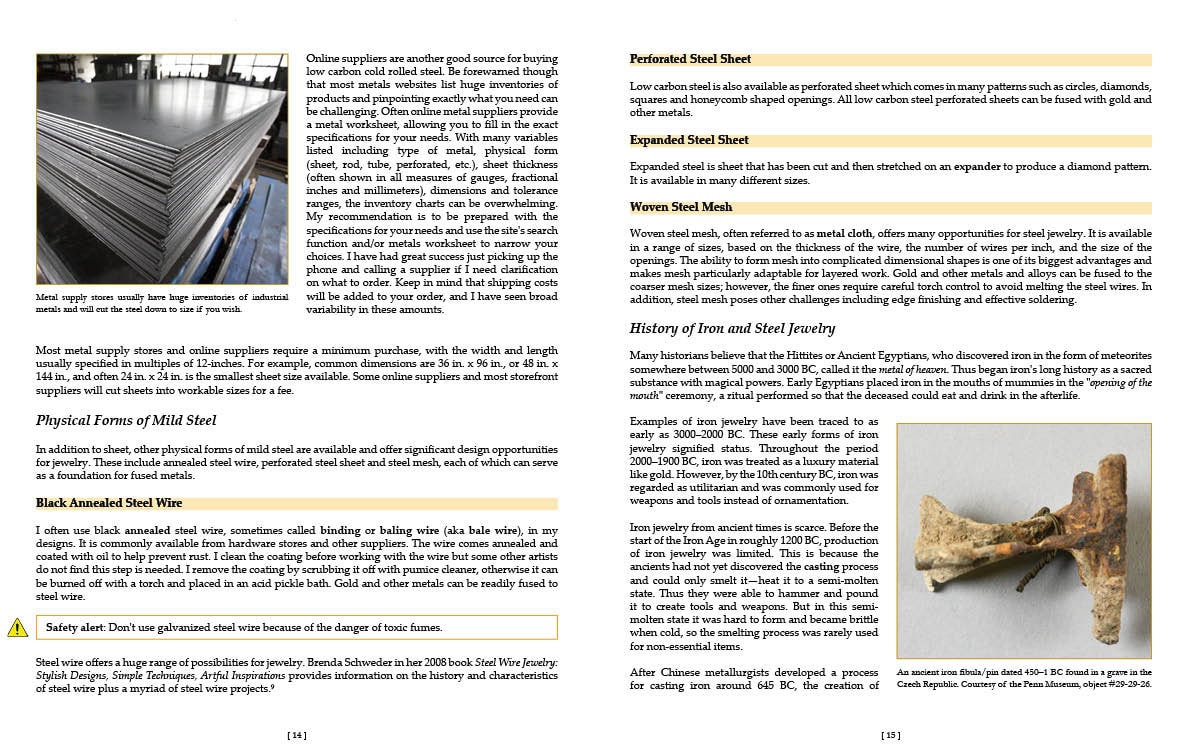
Strangely, however, a very similar yellow, a little warmer leaning toward gold, is used to highlight sub-section headings and frame images, as well as on charts used to organize technical information. From the point of view of information hierarchy, this is confusing. The similarity of color either makes everything a caution or dilutes the importance of the intentionally cautionary sections. A distinct second color, rust perhaps, in keeping with the material topic, would have made the safety alerts pop more.
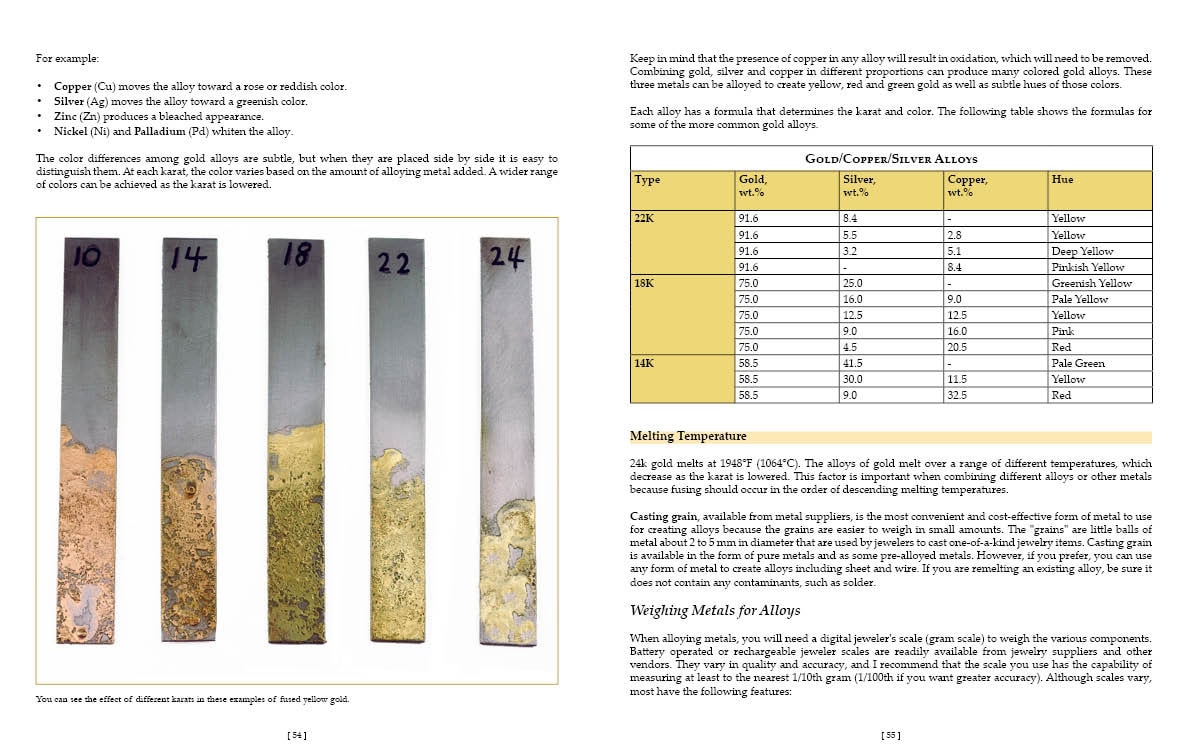
Barnett shares her learning and her personal preferences in an approachable way in eight of the chapters, with a focus on her interest in surface treatments of steel. In Chapter 7. Keum Boo on Steel, there is a short history of the practice of keum boo, a delicate method of bonding gold foil to metal with roots in Korea. Barnett builds off the research of Komelia Okim and Charles Lewton-Brain for this chapter, and uses a piece by Okim to illustrate the three-paragraph history section. While acknowledging that this isn’t a world history of different metalsmithing techniques, I was curious to know more about the practice and feel the chapter could have benefitted from an invited expert to provide additional context for the history and the technique itself.
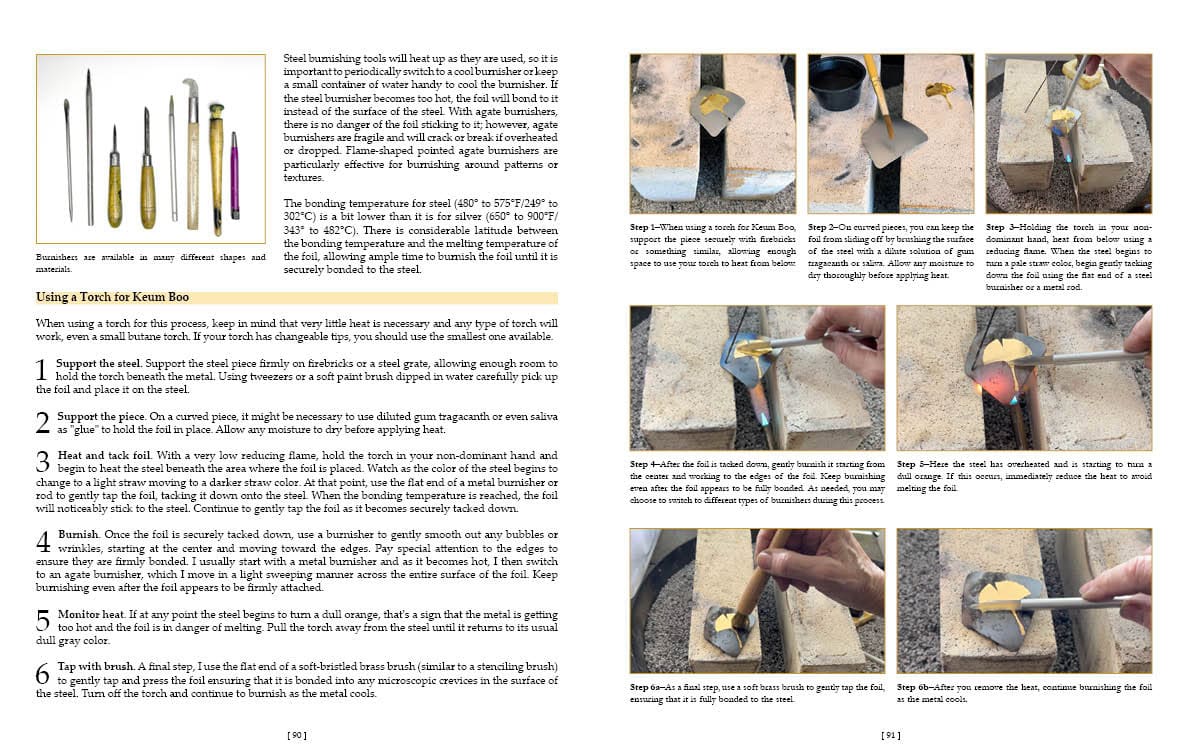
Barnett does bring in the perspective of two experts in areas of the expansive space of steel that aren’t her specialty: Andy Cooperman, based in Seattle, WA, for Chapter 3. Working with Stainless Steel, and Amanda Denison, based in London, England, for Chapter 10. Enamelling on Steel. Bringing in other voices grounded in different studio practices and creative perspectives broadens the scope of the book. I appreciate the dimensionality these contributions give the book.
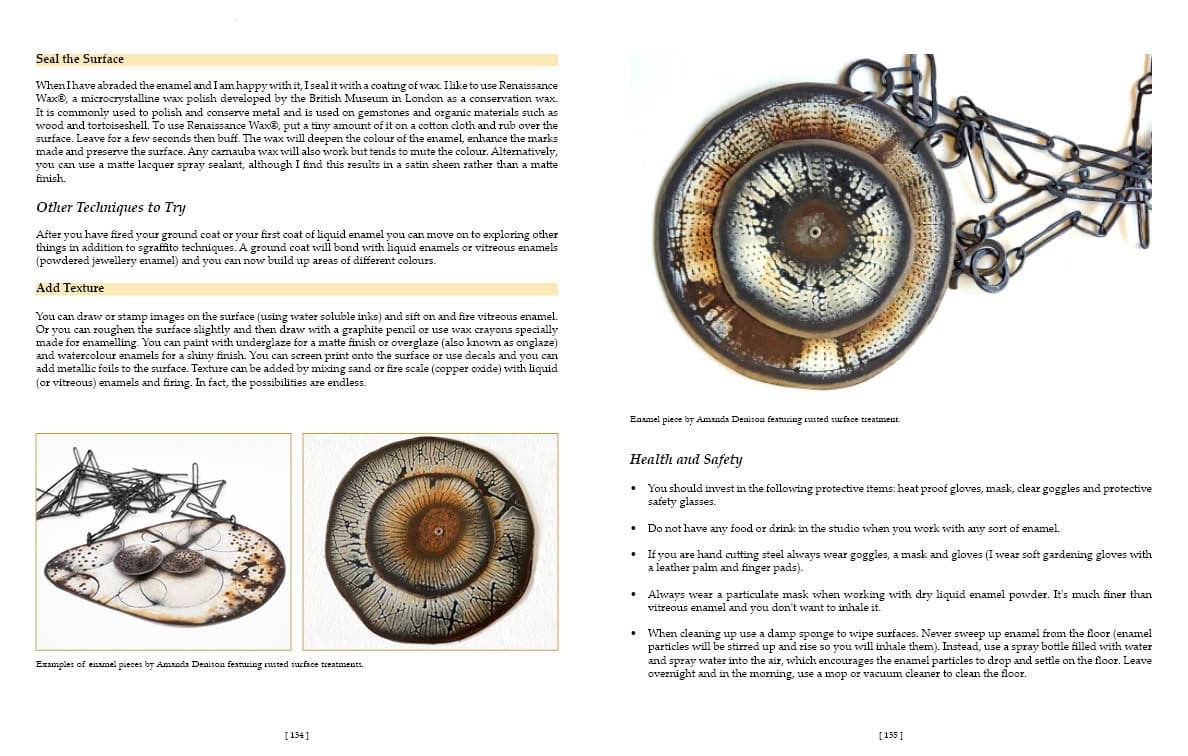
Throughout the book, Barnett explains technical and scientific terms in an accessible way, including important topics such as galvanic corrosion (P76) and solid-state diffusion (P84). As a beginning level textbook, her explanations provide enough context to understand what’s happening when you’re, say, fusing gold foil to mild steel for the purpose of ornamentation. One thing I appreciate about creative metalsmithing is that you don’t need to hold an encyclopedic knowledge about a process to use it effectively. For those who want to know more about the technicalities, there’s always welding technology, metallurgy, and mechanical engineering textbooks to explore. I guarantee they won’t be as delightful to read or have jewelry as illustrations.
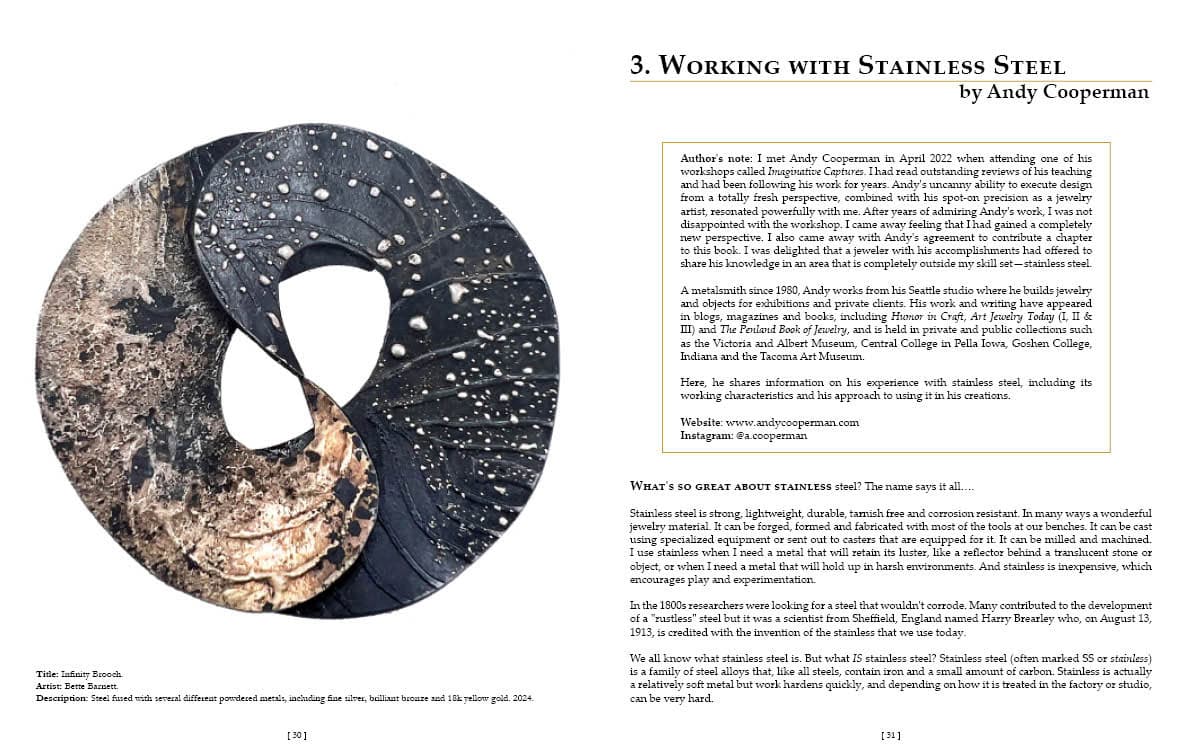
Regarding the illustrations, the majority of the images used to illustrate different techniques are pieces by Barnett. This may have been a choice based on ease and expediency, but it prevents the book from being a purely objective process-oriented textbook. For example, the full-page images preceding the chapters with guest writers are both pieces by Barnett, not by the writer of the chapter, which seems to be a missed opportunity. While the final chapter is a gallery of 15 different artists’ jewelry pieces that feature steel, it would have been a more inclusive and democratic book if the images throughout celebrated the many jewelry artists working with steel.
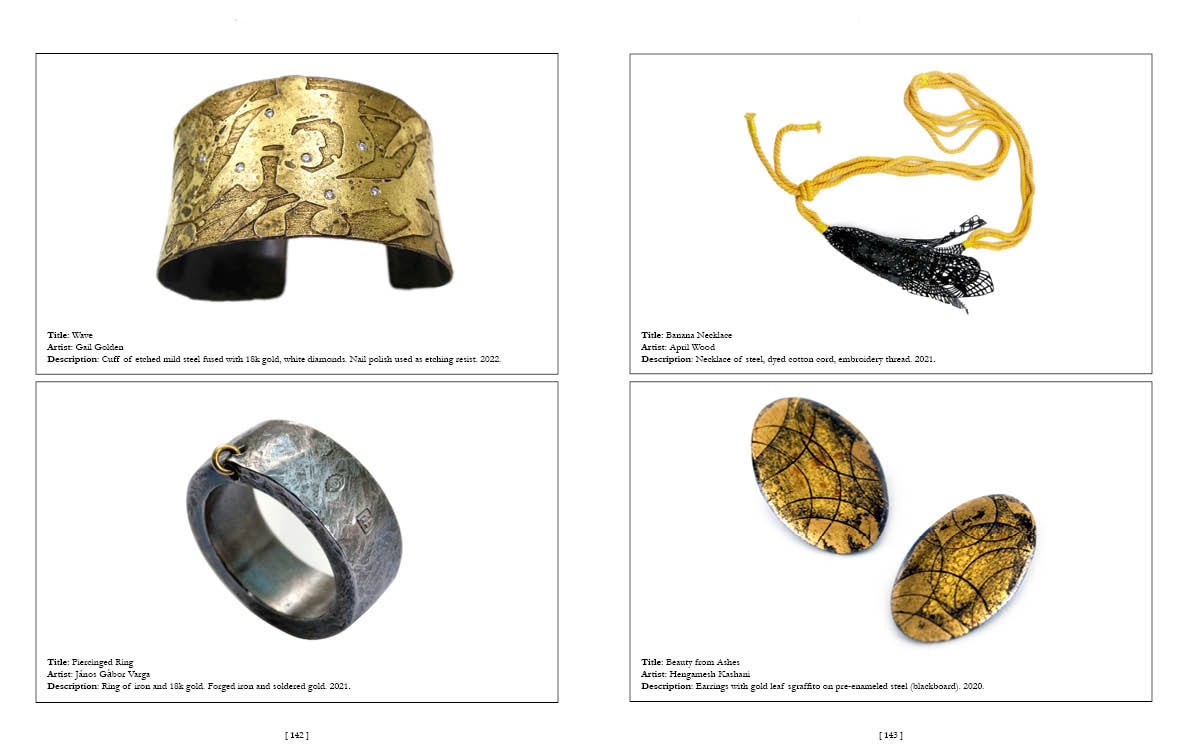
For the pedagogically-minded, Barnett introduces the book as a throughline of learning from her teacher, Chris Nelson, and a major inspiration of his, Daniel Brush. Both of these individuals made work combining steel and gold, experimenting with different effects, from Etruscan to Korean surface techniques. Barnett’s research was inspired by Nelson’s lecture, Iron Mused/Gold Fused … The New Iron Age, given at the Santa Fe Symposium in 2014. Following in his footsteps, Barnett presented Steel Jewelry–New Horizons with Steel and Gold in 2022 at the same symposium and later developed this book from the lecture. The author includes endnotes, for people who might want to go further in their understanding of some of the processes and histories. Though some of them simply reference Wikipedia, the intrepid researcher will find enough to guide them into further knowledge. There’s also a handy glossary.
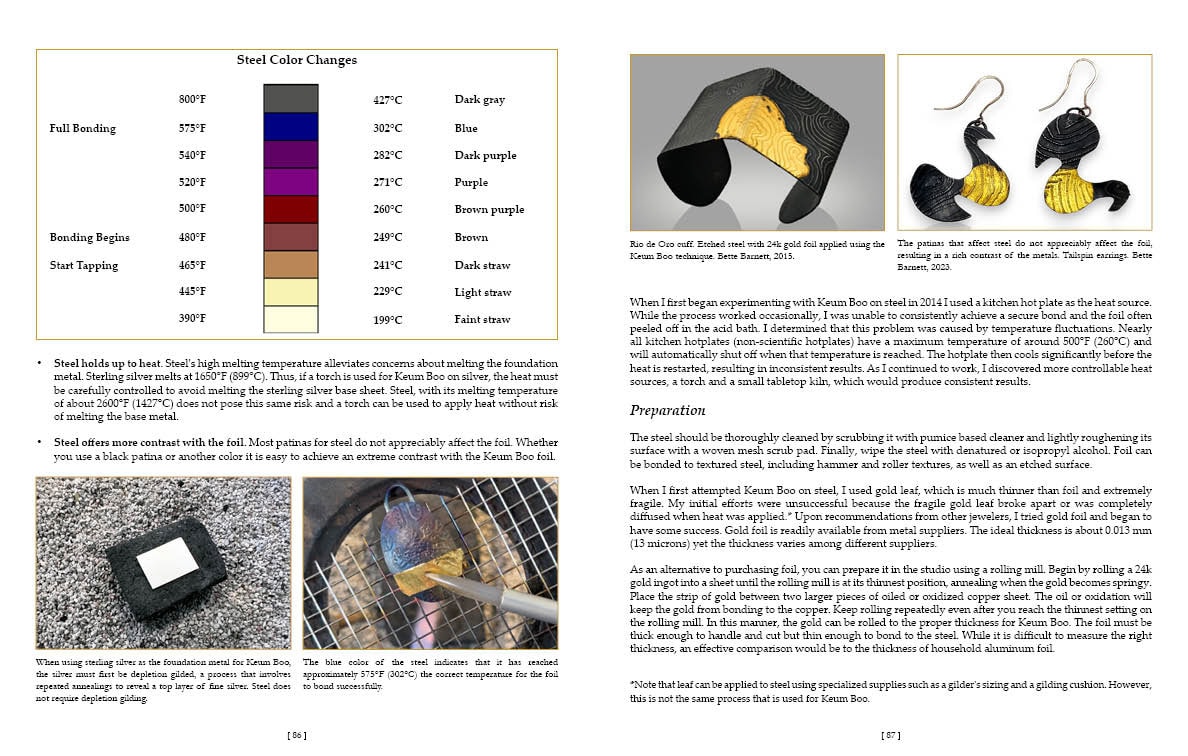
This book delivers exactly what it promises: “an accessible, practical how-to guide for creating steel jewelry.” Geared toward people with a working knowledge of a torch and the basics of jewelry making, it belongs in metalsmithing classrooms and next to jeweler’s benches, dog-eared and smudged, and with the spine broken from frequent use. Through this book, Barnett issues a clear invitation to explore, test, and discover the possibility of steel as another material for adornment.
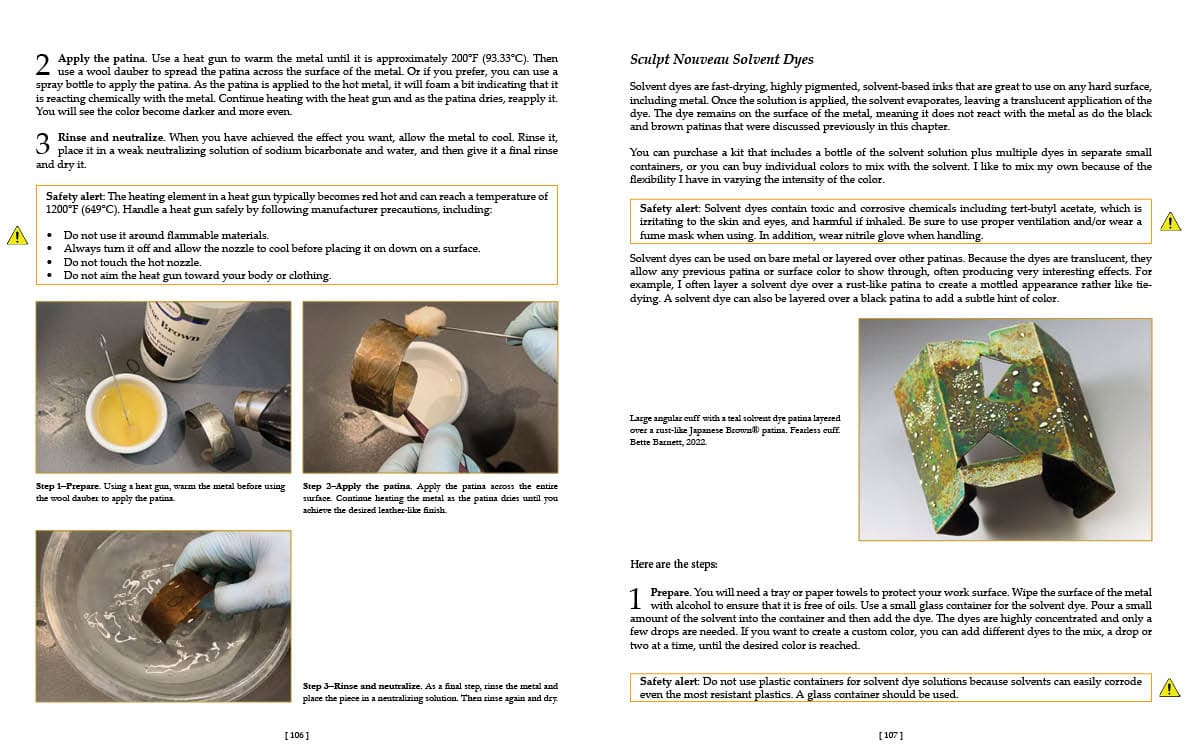
Reviews are the opinions of the author’s alone, and do not necessarily express those of AJF.
We welcome your comments on our publishing, and will publish letters that engage with our articles in a thoughtful and polite manner. Please submit letters to the editor electronically; do so here. The page on which we publish Letters to the Editor is here.
© 2025 Art Jewelry Forum. All rights reserved. Content may not be reproduced in whole or in part without permission. For reprint permission, contact info (at) artjewelryforum (dot) org
